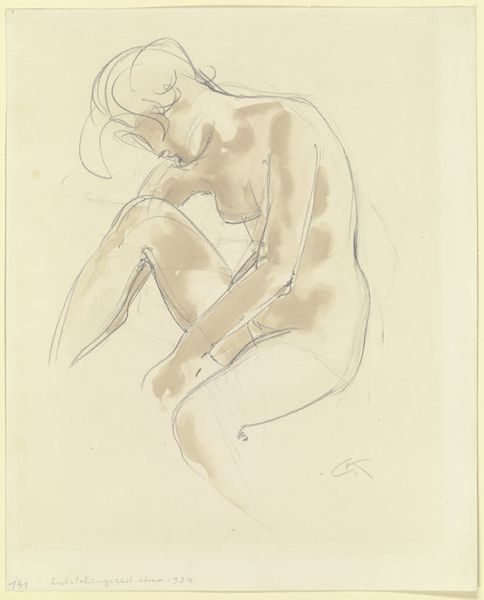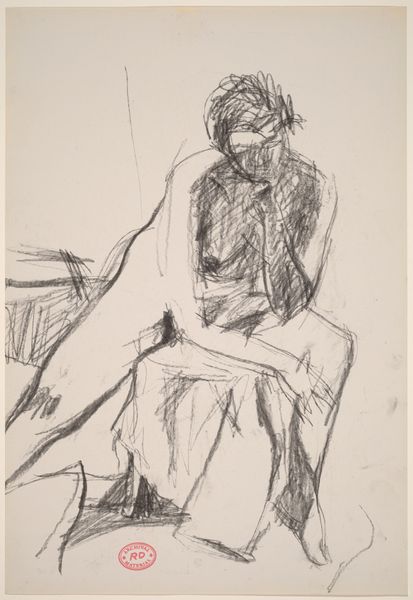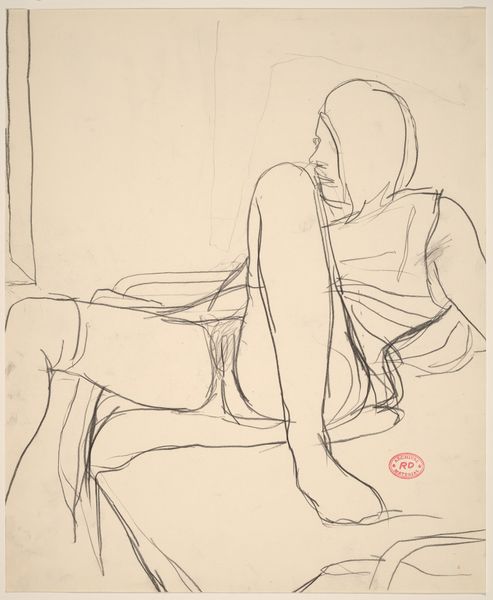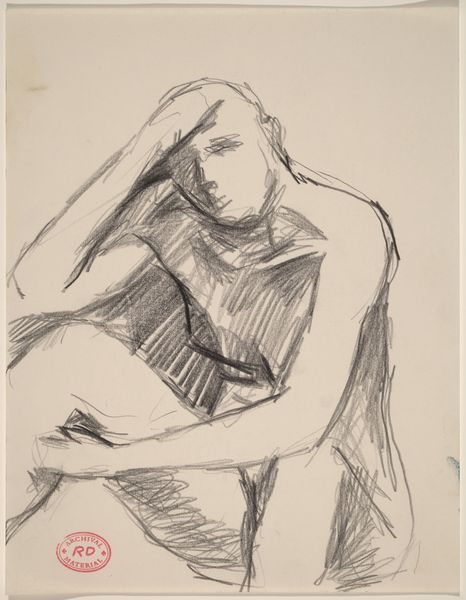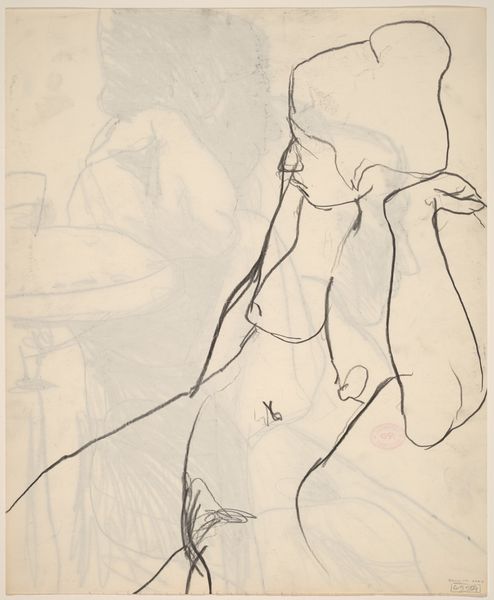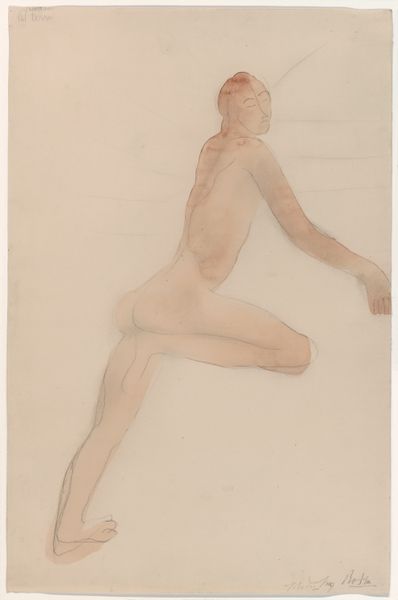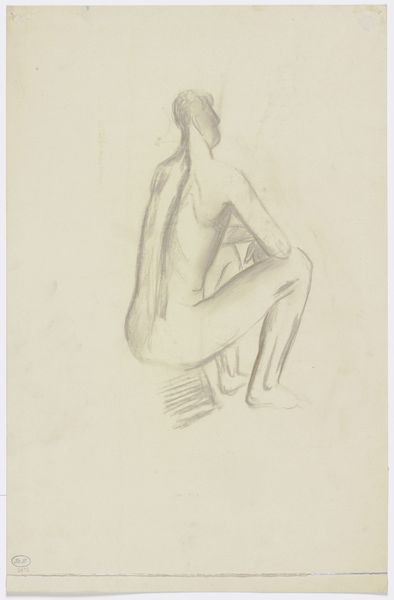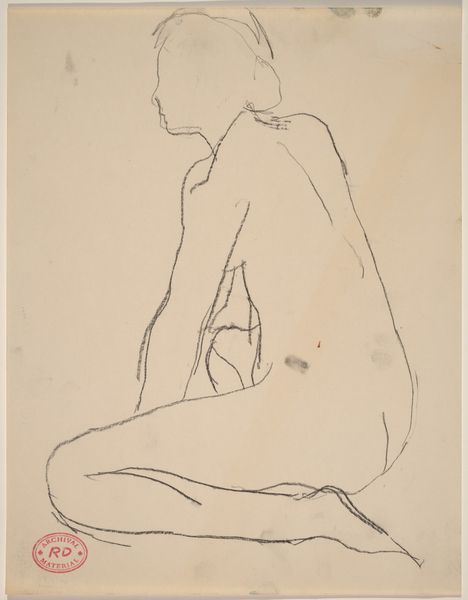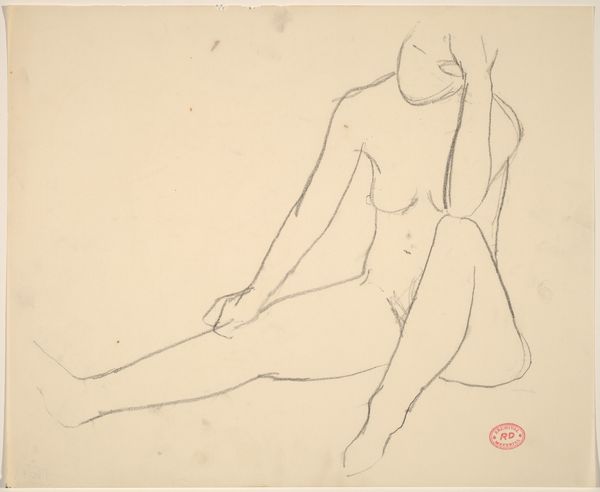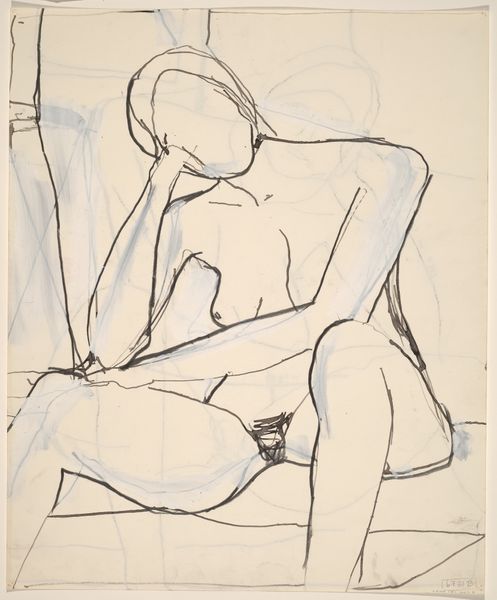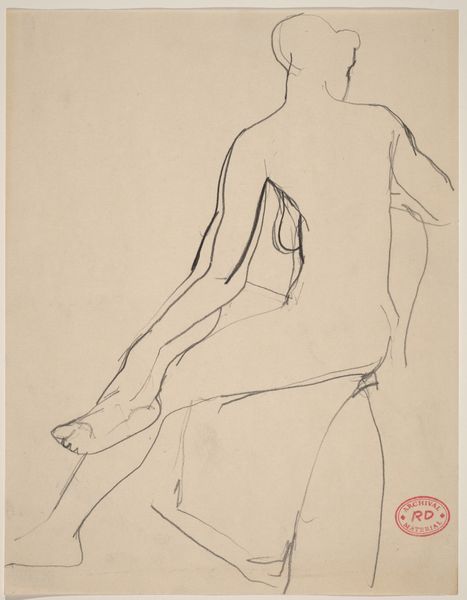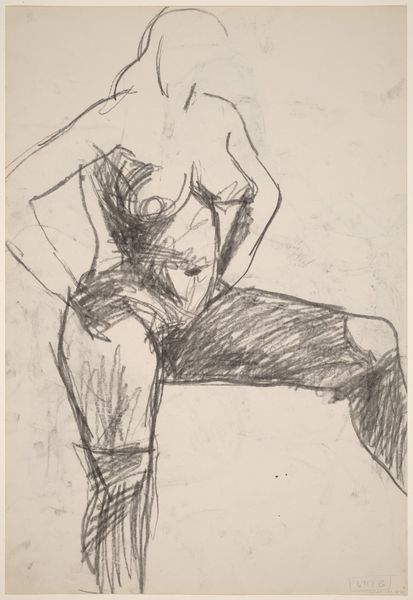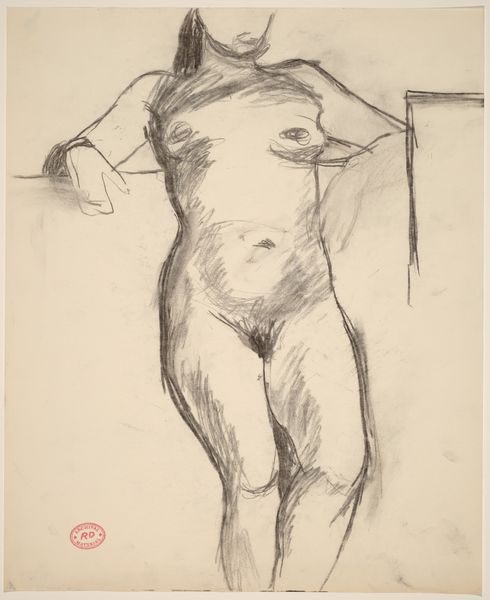![Untitled [female nude seated cross-legged on a stand] by Richard Diebenkorn](/_next/image?url=https%3A%2F%2Fd2w8kbdekdi1gv.cloudfront.net%2FeyJidWNrZXQiOiAiYXJ0ZXJhLWltYWdlcy1idWNrZXQiLCAia2V5IjogImFydHdvcmtzLzI4MmFjMTlmLTgwNDAtNDU4MC04OWNiLTgyODFkNDdkNGE0Mi8yODJhYzE5Zi04MDQwLTQ1ODAtODljYi04MjgxZDQ3ZDRhNDJfZnVsbC5qcGciLCAiZWRpdHMiOiB7InJlc2l6ZSI6IHsid2lkdGgiOiAxOTIwLCAiaGVpZ2h0IjogMTkyMCwgImZpdCI6ICJpbnNpZGUifX19&w=3840&q=75)
Untitled [female nude seated cross-legged on a stand] 1955 - 1967
0:00
0:00
drawing, pencil
#
portrait
#
drawing
#
pencil sketch
#
figuration
#
bay-area-figurative-movement
#
pencil
#
portrait drawing
#
academic-art
#
nude
Dimensions: sheet: 43.2 x 35.2 cm (17 x 13 7/8 in.)
Copyright: National Gallery of Art: CC0 1.0
Curator: Here we have Richard Diebenkorn's "Untitled [female nude seated cross-legged on a stand]," a pencil drawing likely created between 1955 and 1967. Editor: My initial thought is how casual the pose is. There’s a certain vulnerability, yet also a quiet strength, conveyed in the lines. You can see the material presence of the model sitting for a drawing. Curator: Absolutely. The pose evokes classical reclining figures, a Venus perhaps, but grounded in an almost domestic reality. Note how the artist uses the cross-legged posture— a position filled with meditation traditions across different cultures—yet also one of apparent ease. It's fascinating how the figure’s nudity takes on added dimensions, no longer solely erotic. Editor: The immediacy of the pencil strokes adds to that sense of reality, doesn’t it? You can almost feel the artist’s hand moving across the paper. I am particularly interested in the raw quality of the pencil lines. They are not precious or overworked, giving the figure an almost fleeting quality as an effect of how a material process becomes artistic intention. Curator: Yes, it gives us a glimpse into Diebenkorn’s process, a study in capturing form and essence. I feel that a simple medium opens up a depth of psychological and physical meaning. Consider that such direct media such as pencil might be an exploration of reality itself. Editor: There's also something about the economic nature of the medium. Pencil and paper—readily available, affordable. I wonder about Diebenkorn’s access to other materials, or his conscious choice to work with something so fundamental. Could it represent his attempt at reducing representation to its bare essentials? Curator: Perhaps, it brings to mind the way pencil, or drawing in general, is also taught for younger artists, creating connections across different eras. The artist may return to it time and again. A way to find or re-find meaning? Editor: It really does. It forces me to reconsider value – what makes something ‘high art’ versus ‘mere sketch.’ Diebenkorn elevating the everyday through a simple medium prompts questions of how we assign worth to labor and materials in art production. Curator: Indeed. A re-evaluation, using time honored symbols within everyday reach. Editor: It is a captivating approach for those who see art’s symbolic and the maker’s intentions intertwined.
Comments
No comments
Be the first to comment and join the conversation on the ultimate creative platform.

